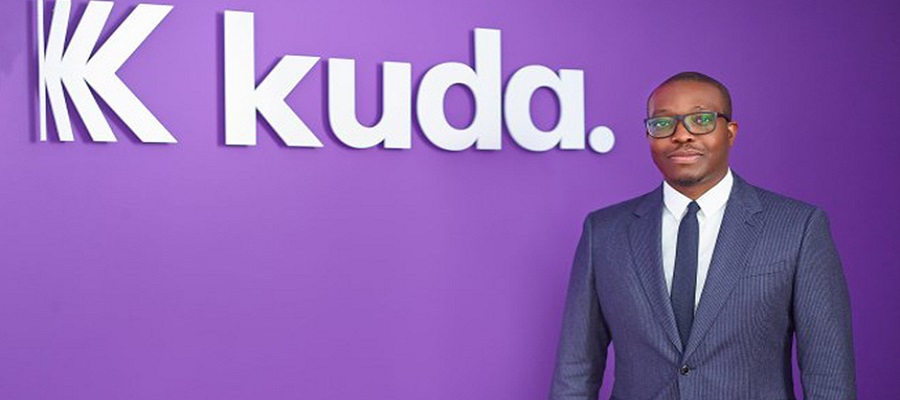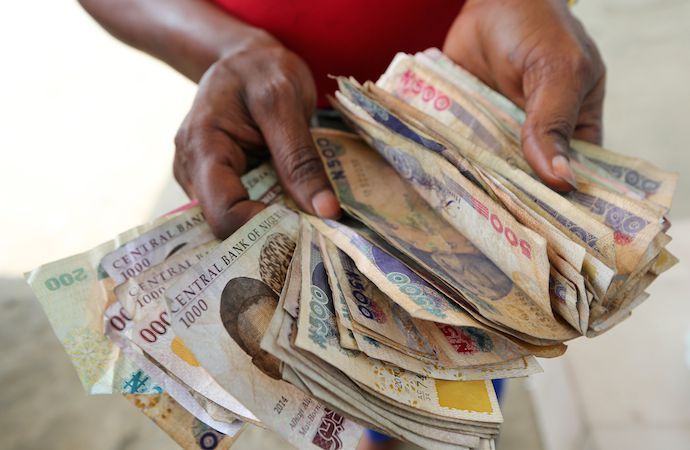E-Financial
Market sentiment influenced by trade developments; Nigerian inflation rebounds in April

By Lukman Otunuga, FXTM Research Analyst,
It is coincidental how Nigeria’s inflation rate accelerated in April, only a month after the central bank unexpectedly reduced interest rates for the first time in more than three years.
With the impacts of the rate cut in March having a delayed effect and unlikely to be reflected any time soon, the 13.7% rise in inflation was based around rising food prices. Should inflation return with a vengeance in the coming months, businesses and consumers may feel the heat – ultimately impacting economic growth. All in all, it remains too early to come to any meaningful conclusion over whether inflation is set to rise, given how this has been the first increase in three months.
The next major risk event for the Nigerian economy will be the GDP report for Q1 which should offer critical insight into the health of the nation during the first quarter of 2019. A figure that exceeds the 2.1% year-over-year expectations should boost confidence over the health of the Nigerian economy.
Markets influenced by ongoing trade tensions
Investor sentiment has swung back and forth this week due to the persistent uncertainty and ever-changing jigsaw puzzle that is being mapped out around global trade developments.
Stock markets were mostly mixed on Thursday amid the contrasting signals that are being delivered to investors in regards to US-China trade tensions. While there is hope on one side of the table that there will be a handshake between the US and Chinese authorities at the G20 next month to smoothen the recent escalation, this is being met with news that the US government will ban Huawei’s access to the US markets over national security concerns.
The conflicting signals over trade are likely to simply spark more uncertainty and confusion in the market, and investors will continue to scatter and reassess their appetite towards taking on risk as a result.
Market sentiment is poised to remain fragile over the next month in the lead-up to the meeting between Presidents Trump and Xi Jinping at the G20 summit late June. Will the world’s two largest economies ever find a middle ground on trade or a tension destined to intensify further throughout the year? This is a question nobody has the answer for. And this is why investors are nervous, especially following the spectacular swerve that has occurred over the past two weeks.
Whatever the outcome of the hotly anticipated Xi-Trump meeting, it will certainly have a lasting impact on market sentiment for the second half of the year.
Euro unable to hang on to gains
Investors who were looking for a quick opportunity to push the Euro higher were given the thumbs up yesterday following reports that President Trump could delay auto tariffs by six months.
However, the Euro’s upside gains are limited with prices trading around the 1.12 level against the Dollar as of writing. Even though the first estimates on the Eurozone and Germany’s Q1 GDP prints met market expectations, the continent’s growth outlook is expected to remain challenged by external factors in the form of trade tensions.
With the outlook for the Euro fundamentally bearish amid growth concerns and the European Central Bank (ECB) adopting a cautious stance, the EURUSD is positioned for further downside. A solid weekly close below the 1.120 level is likely to signal a move towards 1.113 and 1.100, respectively.
Commodity spotlight – Gold
Disappointing economic data from the United States and China added to the negative mood yesterday, which in turn was a welcome development for safe-haven assets.
Gold bulls remain supported by trade uncertainty and concerns over slowing economic growth and this continues to be reflected in the metal’s valuation. Prices have the potential to test the psychological $1300 level again in the coming days as market caution accelerates the flight to safety.
Focusing on the technical picture, the precious metal is bullish on the daily charts. A solid weekly close above $1300 should invite a move higher towards $1310 and $1324, respectively. With the catalysts that can significantly reverse the ongoing flight-to-safety in the near term being limited, Gold bulls remain in the driver’s seat.
E-Financial
Kuda Unveils New Wallet for Multiple Currencies

As the first currency supported by the functionality, Kuda launched an update for its app that allows users to send, receive, hold, and convert USD directly.

Babs Ogundeyi, MD, Kuda
The action comes in response to growing consumer demand for currency-neutral spending, savings, and income management.
As part of its expansion strategy, digital bank Kuda has introduced a multicurrency wallet to assist Africans who live, work, and travel internationally.
Users may keep, fund, and convert between five main currencies—the US dollar, British pound, euro, Nigerian naira, and Canadian dollar—all within a single wallet on the Kuda app with this application, which is still undergoing testing.
“The new wallet is designed to simplify the fragmented experience Africans face when managing money across different countries and currencies,” said Nosa Oyegun, senior vice president, Business Banking, Kuda, during a media parley in Lagos.
“People no longer reside in a single nation. Due to their global reach, Africans should be able to transfer their money with ease, Oyegun stated.
He claims that eligible customers outside of Nigeria may already access the wallet on Android smartphones, and an iOS deployment is planned.
He clarified that Kuda purposefully decided against developing a distinct wallet app.
Customers will be able to log in as normal, open foreign currency balances, convert money when needed, and send or spend money without switching platforms because it will be integrated into the core Kuda experience.
More than N100 billion entered Kuda accounts from LemFi in 2024 alone.
“This wallet is just our first step in acknowledging and supporting the fact that our customers are already living this cross-border reality,” Oyegun stated.
Kuda wants to give people a smooth financial tool that suits their lifestyle, not only currency exchange.
By removing the bottlenecks involved in the need to switch between various apps or financial services, the wallet will enable users from overseas to send money home, exchange currencies, and continue spending from the same account when they visit Nigeria.
Oyegun emphasized throughout the event that the wallet also takes client retention into account.
Kuda plans to keep helping people who move overseas as they adjust to life in other nations rather than losing them.
He further claimed that these users had not churned. “They simply switched nations. We wish to continue servicing them.
Kuda is now one of many African fintech companies developing products for cross-border use cases as a result of the move.
Oyegun pointed out that Kuda’s goal is to become a financial partner for Africans wherever they may be, going beyond simply exchanging currencies.
The bank’s growth trajectory is reflected in Kuda’s first-quarter 2025 performance, which was disclosed during the briefing. Customer confidence in the company’s digital-first strategy was strengthened when it recorded N453 billion in savings deposits and processed N8.4 trillion in total transaction volume.
With the new feature being introduced on the app, Kuda Microfinance Bank hopes to assist online business owners, freelancers, and remote workers who make money in USD with the recently added feature, which is currently undergoing testing.
Users can choose to accept USD payments directly or convert naira into USD using the Spend tab.
In the near future, GBP and EUR will be recognized as alternative currencies, according to the financial institution.
Additionally, in Nigeria, where inflation is severe, having USD on hand might be advantageous and convenient for people.
More Nigerians have recently begun to use digital platforms to improve the stability of their financial status.
For the majority of them, managing multiple currencies—whether via remote work, cryptocurrency, or international trade—has become the standard. Kuda Bank aims to meet these demands and grow its business to meet the demands of the market.
The financial institution’s continued dedication to providing solutions that give its users the best possible experience which is demonstrated by the multicurrency wallet feature.
Speaking about the project, Kuda representatives emphasized that the new wallet was created to make it easier for Africans to manage their money across various nations and currencies.
Customers can log in as normal, open foreign currency balances, convert funds, and spend or send money without switching platforms thanks to the integration of this feature within Kuda.
Along with currency conversion, Kuda plans to provide a financial tool that eliminates the need for users to switch between apps or financial services by enabling users from other countries to send money to Nigeria, convert currencies, and spend from the same account when they visit.
E-Financial
Reps Investigate 25 Insurance Firms for Financial Infractions
The House of Representatives has launched an investigation into 25 insurance companies over alleged financial infractions that have reportedly led to the loss of hundreds of billions of naira in government revenue.

Chairman of the House Sub-Committee on Capital Market and Institutions, Hon. Kwamoti Laori, made the disclosure on Monday during a meeting with representatives of the affected companies at the National Assembly Complex in Abuja.
Laori said the probe was prompted by petitions accusing the companies of violating statutory provisions in their operations, thereby shortchanging the federal government.
“This committee is saddled with the responsibility of addressing a petition based on infractions by these insurance companies regarding their operations and non-compliance with certain statutory provisions,” he said.
“These infractions have led to the federal government losing hundreds of billions of naira in revenue. That is why the companies were invited—to either confirm or refute the liabilities ascribed to them.”
According to the lawmaker, each of the 25 companies had been formally notified of their respective liabilities and summoned to explain their financial dealings.
“The essence of this engagement is to ensure that what is due to the federal government from these private entities is fully remitted,” Laori added.
He emphasized that it is within the constitutional mandate of the National Assembly to track government revenue and block leakages, particularly in sectors involving private sector collaboration.
The committee also frowned at some of the companies’ attempt to stall the investigation by resorting to legal action.
“Some of the companies have gone to court and served the House with court processes. It is now up to us and the House leadership to examine those court papers,” Laori said. “If the court action does not affect the core of our mandate, we will proceed. If it does, we’ll await the court’s decision.”
He criticized what he described as a strategy aimed at obstructing parliamentary oversight.
“Going to court appears to be a deliberate attempt to throw a spanner in the works of the National Assembly,” he stated.
Laori also expressed dissatisfaction with the failure of some company heads to appear in person, instead sending representatives who were unable to respond to critical questions.
“We have insisted that Chief Operating Officers (COOs) must appear in person. One of the COOs sent someone who couldn’t answer any of the allegations—this is unacceptable,” he said. “It is the same people that will later accuse the National Assembly of not doing its job.”
The committee chairman did not spare the industry’s regulator—the National Insurance Commission (NAICOM)—which he accused of negligence.
“NAICOM has a supervisory role, and if they were doing their job effectively, we wouldn’t be here conducting this investigation. They need to sit up,” Laori said.
Meanwhile, 17 of the companies currently in court sent a legal representative, Mr. Abimbola Kayode, to the hearing on Monday.
E-Financial
Naira Slides Again, Hits ₦1,532.34/$ Despite CBN’s Dollar Push

The naira closed the past week weaker than the previous one, as it depreciated by 0.14 per cent week-on-week to settle at 1,532.34/$ at the Nigerian Foreign Exchange Market.

This weakening came despite the naira rebounding to a four-month high on the first trading day to close at 1,518.88/$. After that, it weakened to 1,530.25/$, then lower to 1,533.11/$ before gaining some strength to close the week at 1,532.34/$ at the official market.
During the past week, the highest amount that the naira traded for was 1,538/$, and the lowest was 1,515/$ on the NFEM.
At the parallel market, the currency closed trading within the band of 1,535.00/$ and 1,544.00/$1.
Analysts have maintained that the intervention of the Central Bank of Nigeria and improvement in the foreign exchange liquidity were essential to stabilising the naira at the FX market.
Cowry Assets Management Limited, in its weekly market report, averred that the naira had recorded mixed trading across the markets as it appreciated slightly by 0.06 per cent week-on-week to close at 1,544.00/$1 at the parallel market while closing in the red zone at the official market.
“The divergent movements reflect ongoing supply-demand imbalances and the evolving FX liquidity landscape,” stated the analysts, who, however, maintained that the naira looks to record further gains as improved oil output and elevated prices drive higher dollar inflows, which could sustain the current pace of reserve accretion.
“The positive oil earnings outlook, combined with steady capital inflows, should offer continued support for the naira and enhance near-term FX market stability,” the report added.
Recent data from the Nigerian Upstream Petroleum Regulatory Commission shows that the average daily crude oil production (excluding condensates) rose by 3.6 per cent to 1.51 million barrels per day in June 2025 from 1.45 mbpd in May. This marks the first time in five months that Nigeria has met its OPEC production quota, reflecting improvements in operational efficiencies and security around key oil-producing assets.
AIICO Capital Limited, in its weekly report, noted that the CBN had intervened intermittently in the FX market in the past week.
It stated, “Dollar sales early and late in the week helped maintain relative stability. The naira closed at 1,532.34/$, down 13.6 bps w/w. Reserves rose by $422m to $37.85bn” as of Thursday from $37.43bn in the previous week.
It is expected that the naira will likely hold its current range amid better liquidity, while markets weigh potential FX impacts from the Monetary Policy Committee’s decision starting Monday (today).
Analysts are split on what the decision of the MPC should be regarding the benchmark. On one side, doves are calling for a modest rate cut, pointing to cooling inflation, a more stable naira, and signs of reform traction. On the other hand, hawks are warning that premature easing could undo all the gains of FX reforms and decelerating inflation, especially with food supply shocks and global risk still very much in the picture.
“For now, traders are positioning around the edges, but the real signal will come from the tone of the communique,” Comercio Partners asserted.

 E-Financial3 days ago
E-Financial3 days agoUBA’s LEO Becomes Africa’s First Chatbot to Enable Cross-Border Payments

 News3 days ago
News3 days agoUN Appoints Sa’id, Nigerian to Nuclear Panel

 E-Business3 days ago
E-Business3 days agoNIMC Enrolls 122m for NIN, Cuts Extortion by 40 Percent

 Telecom2 days ago
Telecom2 days agoMTN Nigeria Rewards 1,500+ Winners with ₦290m in Mega Billion Promo

 Telecom3 days ago
Telecom3 days agoMTN Urges Nigerian to Regards Telecom Infrastructure as National Assets

 General News3 days ago
General News3 days agoAppeal Court Nullifies Registration of ‘KPMG Professional Services’

 E-Financial2 days ago
E-Financial2 days agoNaira Slides Again, Hits ₦1,532.34/$ Despite CBN’s Dollar Push

 Telecom3 days ago
Telecom3 days agoBitget Launches $6M Global Crypto Trading Contest with New Competitive Segments


























